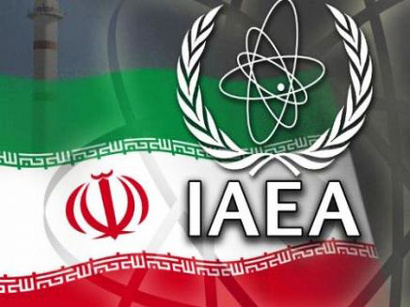Expert explains why monitoring Iran's uranium mines important for IAEA

By Umid Niayesh
The International Atomic Energy Agency (IAEA) can detect Iran's
possible illegal nuclear activities by monitoring the country's
uranium mines, an Iranian nuclear expert explained.
While the additional protocol is not implemented by Iran, the
agency cannot be aware of the country's over all nuclear
activities, Behrooz Bayat, a former consultant at the International
Atomic Energy Agency (IAEA) told Trend on Aug. 25.
The Additional Protocol allows for unannounced inspections, outside
of declared nuclear sites and it is seen as a vital tool at the
IAEA's disposal to make sure that a country does not have any
hidden nuclear operations. Additional Protocol was endorsed earlier
by Iran in 2003, but wasn't officially ratified by the country's
parliament and the country's officials have announced that it
should pass the legal processes before implementation.
Bayat noted that the IAEA monitors all parts of Iran's nuclear fuel
producing from beginning to end.
Monitoring the Gchine and Saghand uranium mines is a way for
estimating possible hidden use of uranium in the country, he said.
All uranium which is being extracted from the mines should enter
the known nuclear fuel production cycle, Bayat added.
Iran has agreed to provide IAEA information and managed access to
the Saghand and Gchine uranium mines.
The Saghand Mine, located in Yazd in central Iran, is designed to
extract low grade hard rock ore bodies through conventional
underground mining techniques. The annual estimated production
output of the mine is 50 tonnes of uranium.
The Gchine mine is located in southern Iran near Bandar Abbas. The
associated mill is located on site. The estimated production
capacity for the mine is 21 tonnes of uranium per year.
The mines in Saghand and Gchin are probably designed for the
mentioned output but currently their production is much lower- the
entire cumulative Uranium production between 2007 and 2011 was
about 40 tonnes.
Bayat underlined that considering the mines' low levels of uranium
reserves and Iran's limited demand for enriched uranium extracting
uranium from the Gchine and Saghand is not at all economically
justified, however self-sufficiency in producing nuclear fuel and
having a nuclear program is unfortunately a "prestige issue" for
many countries including Iran.
While responding to a question about the reason for monitoring
Iran's Molybdenum, Iodine and Xenon Radioisotope Production (MIX)
Facilities (the MIX is a hot cell complex for the separation of
radiopharmaceutical isotopes from targets, including uranium,
irradiated at Tehran Research Reactor) the expert explained that
the agency monitors all nuclear activities of the countries both
military and non-military aspects.
Monitoring the Tehran Nuclear Research Center including Molybdenum,
Iodine and Xenon Radioisotope Production Facility and the Tehran
Research Reactor (TRR) is not a recent issue, he added.
Bayat noted that it is important to the IAEA that Iran does not use
the waste of its research reactors including TRR for reprocessing
of plutonium.
"However the produced plutonium in the Tehran Research reactor is
very low, but they want to make sure that there are no reprocessing
related activities in Iran," he stressed.
The expert also noted that the radioisotopes in general may be used
in a dirty bomb, so it is important for agency to supervise all
nuclear activities.
A dirty bomb is a speculative radiological weapon that combines
radioactive material with conventional explosives. The purpose of
the weapon is to contaminate the area around the dispersal
agent/conventional explosion with radioactive material, serving
primarily as an area denial device against civilians.
The IAEA's latest report published last week confirms that there
are no ongoing reprocessing related activities with respect to TRR,
the MIX Facility and the other facilities to which the agency has
access in Iran.
